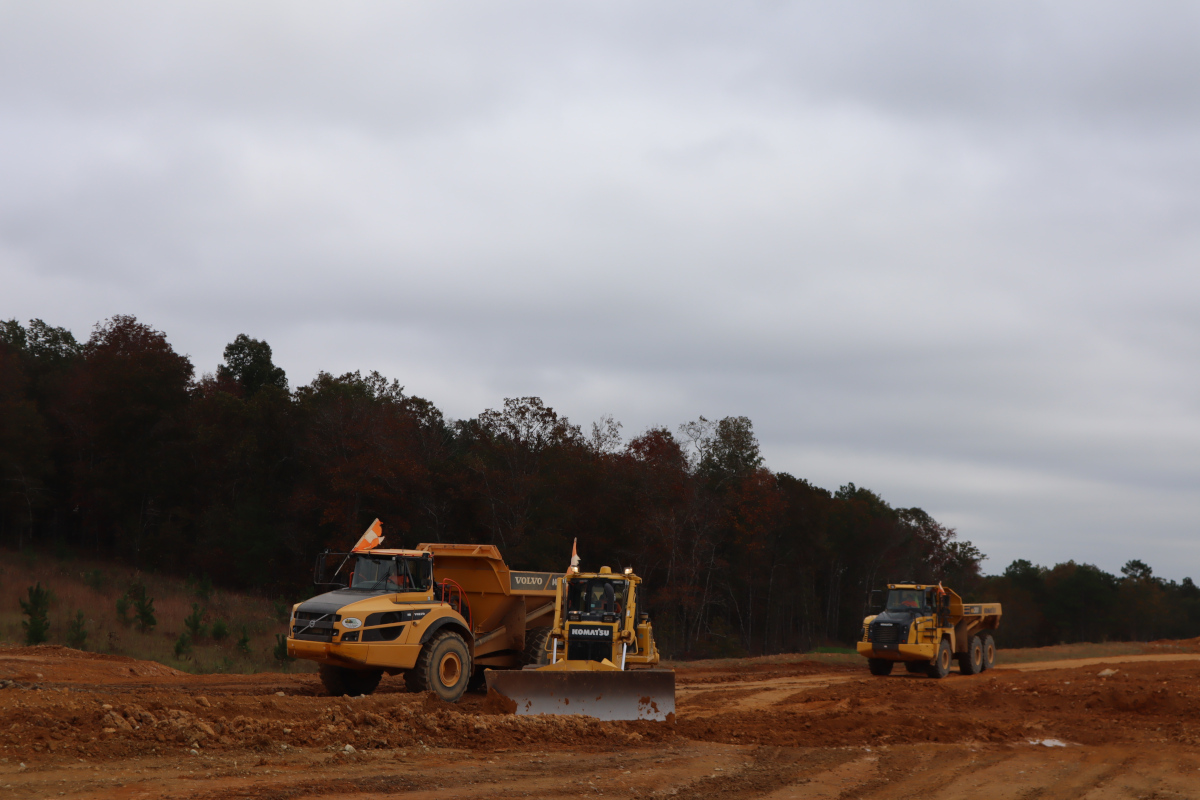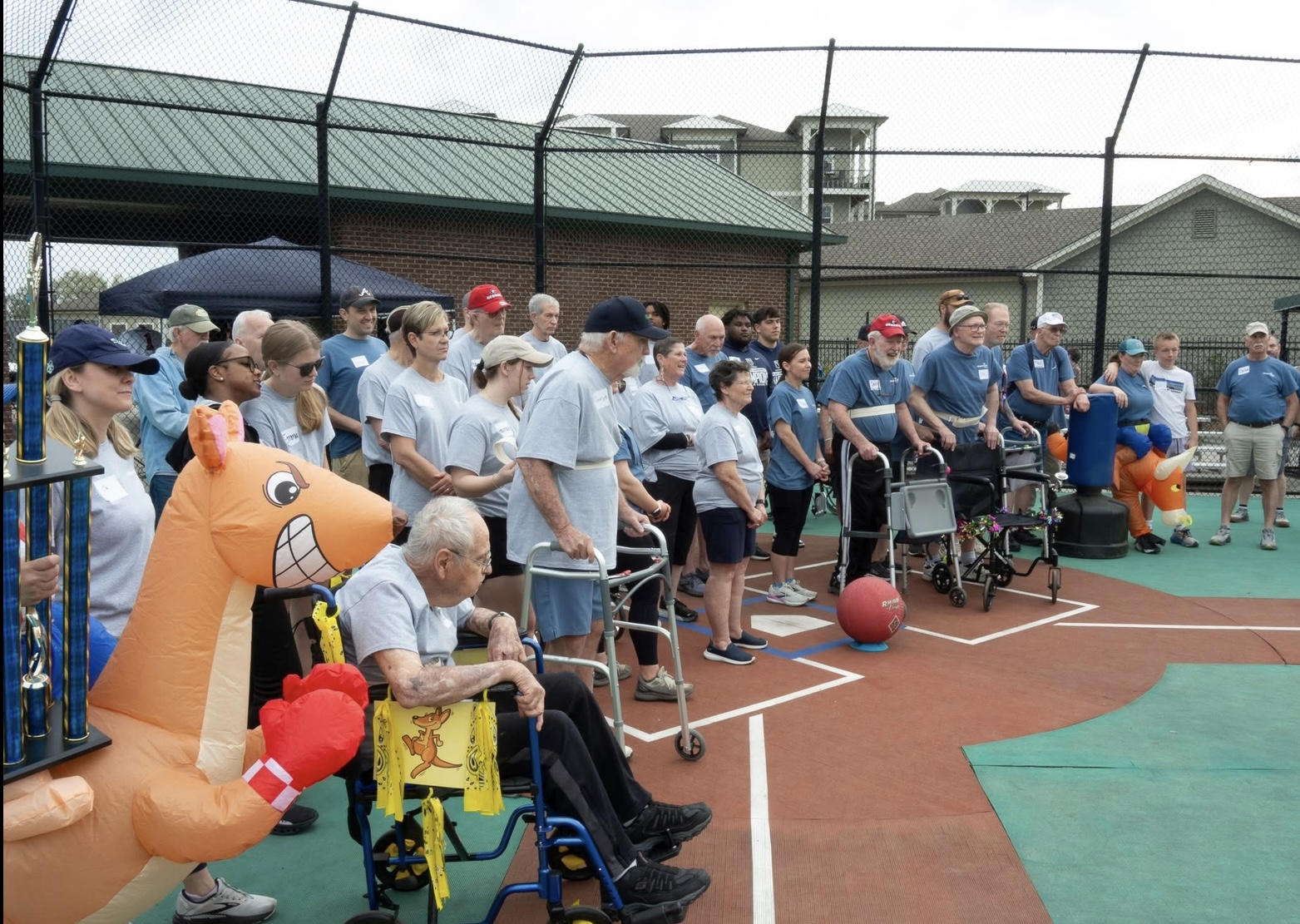
The sounds of trucks and heavy equipment remained at work as long as they could ahead of the arrival of wet and stormy weather caused by the remnants of Hurricane Zeta at Polk County’s nearly mile-long landing strip near the midpoint between Cedartown and Rockmart off Highway 278.
It remains constant, the back-and-forth movement to build up a large enough mound to get a flat plateau that will stretch far out and extend the concrete far past where it sits today, and maybe one day be the endpoint of a trip in the air for travelers who haven’t been here before.
For now, it is a construction project that in the coming months goes from being an active work site with aircraft coming and going. Despite all the machinery to make improvements at Cornelius Moore Field a reality in 2021, operations are running smoothly as possible according to Airport Manager Chuck Beavers.
He sat down for a chat about the ongoing project just ahead of the arrival of the storm on October 27, and said that so long as the weather doesn’t make a major impact in the weeks to come – and after a required shutdown for the rain, then the time to dry everything back out to move dirt again – it should be done in the winter months of 2021.
“We’re currently in the last stages of the Runway Extension project, and we’re looking toward completion sometime in mid-February. That’s all based on weather,” he said. “Anytime we have some rain, that pushes the project back a few days.”
He said the project that was undertaken in 2019 hasn’t caused any impact on aircraft being able to operate on Cornelius Moore Field as the day-to-day traffic of cropdusters, helicopters used to inspect power lines, skydiving planes from the two outfits around the airport taking up customers and pilots who land from around the region to take advantage of aviation gas prices come in for a landing and takeoff again.
“We’ve increased our fuel sales over the course of two years, we’re very competitive as far as our fuel prices are concerned,” Beavers said. “That draws in other airplanes from around the area, and consequently our hangars are full and we stay at about 100% occupancy.”
The big project underway at the airport was proposed by former Governor Nathan Deal as one of a group of 11 around the state he wanted to be funded in 2018 during his final year of office, and after some debate and negotiation with the Polk County Commission and the state Department of Transportation got the project mainly covered by state and federal money with just over $1 million covered to extend the runway another 1,000 feet, along with a taxi-way at the far end of the runway to give space for planes to move without interfering with another coming in for landing or taking off.
Beavers said the current dimensions are 75 feet wide by just over 4,000 feet long, and with the added strip space for landing it’ll accommodate aircraft like small jets used by the corporate world to ferry around executives.
“The additional length is necessary for larger jets, primarily for their insurance carriers,” he said. “They require a larger runway for safety reason, and hopefully it’ll attract more business-related aircraft to the airport. We’re looking forward to that, and our fuel prices are competitive – much more so than closer into the metro area.”
The hope too is to be considered for rental of hangar space as well to help generate revenue for the county in one of the bigger opportunities for Polk to bring in dollars not directly related to taxes or fees in government operations.
“I know people think that it may seem sleepy, but we stay busy out here,” Beavers said.
He said that people “underestimate the economic impact” of the airport, and that it isn’t all about fuel sales and rental fees for hangars. The skydivers who come in to the area spend money for accommodations and food, visitors will fly in to use the Silver Comet Trail from around the region on their small planes.
“I think the citizenry has no idea that this is one of the largest facilities that the county owns, both in value and acreage,” he said. “We try to maximize our income and minimize our expenses and just be good stewards of the taxpayer’s money out here.”
Beavers has high hopes for the future of continued improvements. Along with continued work on the runway to keep the concrete strip from developing problems like sealing cracks and some rehab – there’s apron work that he foresees as well.
A security measure he wants to see completed as well is perimeter fencing around the airport, and potentially even a viewing stand setup for people to watch operations of aircraft coming and going from the runway much in the same way viewing platforms are in place for trains.
“It’s an interesting place to come and watch on the weekend, especially for kids,” he said. “We welcome that. We’d like for them to come out and sit on the porch with us and watch the airport operations on a Saturday or Sunday afternoon.”





















Leave a Reply